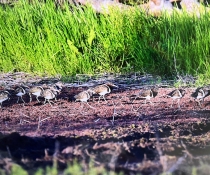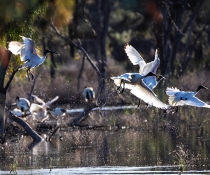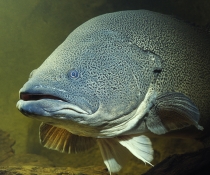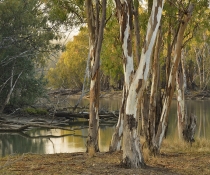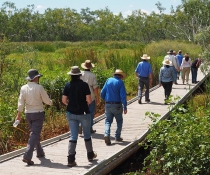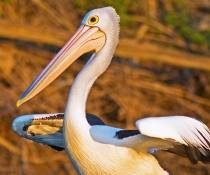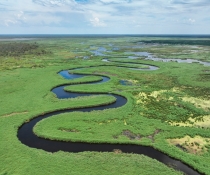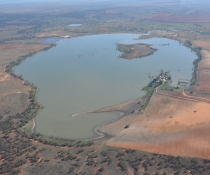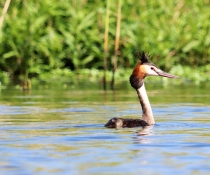Lake Brewster pelicans survive challenging journey north
NSW Department of Climate Change, Energy, the Environment and Water scientists are excited by the safe arrival of 2 banded pelicans in north-west NSW, a milestone for the Lake Brewster Banding Project.

The pelicans, wearing distinctive bright orange leg bands, were discovered alive and well at Narran Lake – after being banded at Lake Brewster as juveniles.
One of the pelicans (number 122) was banded at Lake Brewster 5 years ago as part of a study to understand more about this iconic Australian waterbird's movement and breeding behaviour. The second pelican appears to have not yet fully matured and was banded more recently. Narran Lake is more than 400 kilometres from Lake Brewster.
Senior Scientist Dr Jennifer Spencer explained the purpose of the study is to understand where young pelicans go when they fledge and disperse and whether they return to breed in the wetland where they were born in future years.
It is, Dr Spencer said, the first time in 20 years that the Narran Lake colony has been active.
Sadly, the mortality rate of juvenile pelicans can be reasonably high. Previous reports of Lake Brewster-banded pelicans mostly involved deceased or injured birds, with mortality often resulting from human induced factors, including powerlines or fishing line.
The first year of a young pelican's life is fraught with risk. This, Dr Spencer said, makes the safe journey of the 2 birds to Narran Lake more remarkable.
"It's critical that they find safe places to feed and build up their condition, so they can move around and eventually become old enough to have their own young.
"Most of the reports we have received to date were of young birds that had died within 6-12 months of being banded," she said.
Dr Spencer said pelican 122 was one of the first to be banded in the program and is now at an age where it could breed.
The furthest record north was another happy and content young Brewster banded pelican spotted feeding near the mouth of the Noosa River in Queensland last year.
The department and its partners, the University of NSW, Lake Cowal Foundation and WaterNSW, have expanded the banding program to include black banded pelicans in the Narran Lake system and blue banded pelicans in the Gayini Wetlands, in the Murrumbidgee catchment.
Senior Scientist Dr John Porter encouraged members of the community to report any pelicans they see wearing a coloured band around their leg.
"It's easy to get involved in the 'Peli Bands' citizen science project," Dr Porter said.
"The more people on the lookout for these majestic birds, the more data we can gather on their movements and the threats they face, and the better we'll be able to manage our wetlands to help protect pelican populations in the long term," Dr Porter said.
- date and time of sighting
- a photograph of the banded bird (if possible)
- the colour and number on the colour band and metal leg band (if you can see it)
- the location of your sighting (a GPS point or nearby locality will help)
- the context – if the bird was alone or with a group
- the bird's behaviour – feeding, flying, etc.
- condition of the bird – healthy, unwell or deceased.
If you find a coloured leg band but no bird, we would also like to hear from you.
In our project, we use orange leg bands for young pelicans at Lake Brewster, black bands for those banded at Narran Lake and blue bands for young pelicans in the Gayini Wetlands.
We can also pass on records to fellow researchers using red leg bands for pelicans in Gippsland Lakes and green leg bands in Westernport Bay, Victoria.


